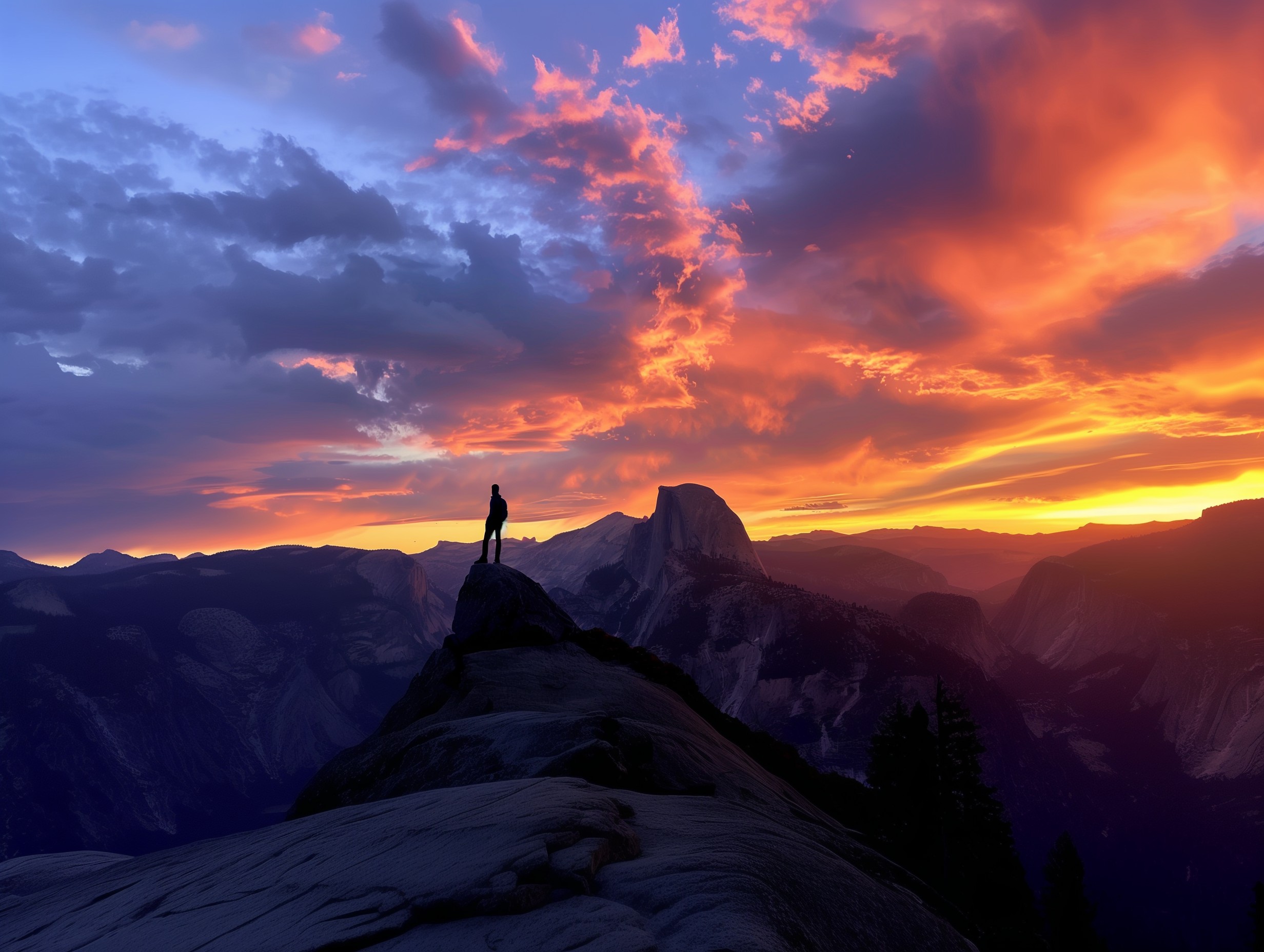
History of Yosemite National Park
Yosemite National Park, nestled in the heart of California's Sierra Nevada mountains, stands as a beacon of natural beauty and conservation success. Established in 1890, thanks to the pioneering efforts of individuals like John Muir who advocated for its protection, the park spans nearly 1,200 square miles of breathtaking valleys, towering waterfalls, and ancient sequoias. Its history is not just one of geological wonders formed over millions of years but also a narrative interwoven with Native American heritage—specifically the Ahwahneechee tribe—and the advent of America's national park idea. Yosemite's designation marked an early realization that such majestic landscapes deserved preservation for future generations—a sentiment echoed by President Abraham Lincoln’s landmark decision in 1864 to grant Yosemite Valley and Mariposa Grove to California as public trust. This act laid groundwork for what would become a global movement towards conserving natural spaces. Through changing seasons and passing years, Yosemite has attracted explorers, artists like Ansel Adams whose work immortalized its vistas in black-and-white photography; climbers drawn to El Capitan’s imposing granite face; and millions seeking solace or adventure within its expansive wilderness.
Yosemite's Natural Wonders
Iconic Landscapes and Landmarks
Yosemite National Park is home to some of the most iconic landscapes and landmarks in the United States. From the towering granite cliffs of El Capitan and Half Dome to the majestic waterfalls of Yosemite Falls and Bridalveil Fall, there is no shortage of breathtaking sights to explore. Visitors can hike through lush meadows, wander among ancient sequoia trees, and marvel at the beauty of Mirror Lake. The park offers endless opportunities for outdoor adventure and awe-inspiring views.
Flora and Fauna
The diverse flora and fauna found in Yosemite National Park make it a paradise for nature enthusiasts. The park's ecosystem supports over 1,500 species of plants, including rare wildflowers like Mariposa lilies and Indian paintbrushes. Wildlife abounds in Yosemite as well, with sightings of black bears, mountain lions, mule deer, bobcats, coyotes, foxes, and more. Birdwatchers can spot various avian species such as bald eagles soaring overhead or listen to the melodic songs of yellow warblers along hiking trails.
Geological Features
Yosemite National Park's geological features are a testament to millions of years' worth of natural processes shaping its landscape. The park boasts stunning granite formations that have been sculpted by glaciers into dramatic peaks like Cathedral Peak and Sentinel Rock. The famous Yosemite Valley was carved out by glacial erosion during several ice ages ago, leaving behind steep walls that rise thousands of feet above the valley floor. Additionally, visitors can witness impressive rock formations such as Half Dome—a massive dome-like structure that attracts climbers from around the world seeking an adrenaline-pumping challenge.
Recreational Activities
Hiking and Backpacking
Yosemite National Park offers a plethora of hiking and backpacking opportunities for outdoor enthusiasts. With over 750 miles of trails, hikers can explore the park's stunning landscapes, including towering granite cliffs, cascading waterfalls, and lush meadows. One popular trail is the Mist Trail, which takes hikers to the top of Vernal Fall and Nevada Fall. Another must-visit hike is the Half Dome Trail, known for its challenging ascent up steep cables to reach the iconic summit. Whether you're a novice or experienced hiker, Yosemite has something for everyone.
Rock Climbing
Rock climbing in Yosemite National Park is an exhilarating experience that attracts climbers from around the world. The park offers countless routes on its majestic granite walls that provide both beginner-friendly climbs and challenging multi-pitch adventures. El Capitan stands as one of the most famous rock formations in Yosemite, with its sheer vertical face attracting seasoned climbers looking for a test of their skills. Other notable climbing areas include Cathedral Peak and Tuolumne Meadows. Climbers can enjoy breathtaking views while tackling these impressive rock formations in Yosemite.
Wildlife Watching
Wildlife watching is a popular activity among visitors to Yosemite National Park who want to observe diverse animal species in their natural habitat. The park boasts an abundant wildlife population including black bears, mule deer, coyotes, bobcats, gray foxes, and various bird species such as bald eagles and great horned owls. Visitors can spot these animals while exploring different regions of the park like Yosemite Valley or Tioga Road. It's important to remember that wildlife should be observed from a safe distance to protect both humans and animals alike.
Visitor Information
Best Times to Visit
Yosemite National Park is a breathtaking destination to visit throughout the year, but there are certain times that stand out as the best. Spring and fall offer mild temperatures and fewer crowds, making it ideal for hiking and exploring the park's stunning landscapes. In spring, visitors can witness the vibrant wildflowers in bloom while enjoying pleasant weather. Fall brings beautiful autumn colors to Yosemite Valley, creating a picturesque backdrop for outdoor activities.
Accommodations and Camping
When it comes to accommodations and camping options in Yosemite National Park, visitors have plenty of choices. The park offers several campgrounds that range from primitive sites with minimal amenities to more developed ones with facilities like showers and fire rings. Additionally, there are numerous lodging options available within or near the park such as hotels, lodges, cabins, and vacation rentals. Whether you prefer sleeping under the stars or staying indoors with modern comforts, Yosemite has something for everyone.
Park Rules & Safety Guidelines
To make your visit to Yosemite National Park safe and enjoyable for everyone, it's important to familiarize yourself with the park rules and safety guidelines. Some key rules include sticking to designated trails when hiking, not feeding wildlife or approaching them too closely, properly disposing of trash in designated receptacles or bear-proof containers if camping overnight. It is also critical to follow any fire restrictions in place during your visit due to potential wildfire risks. By respecting these rules and guidelines set by the park authorities, you contribute towards preserving this natural wonderland for future generations.